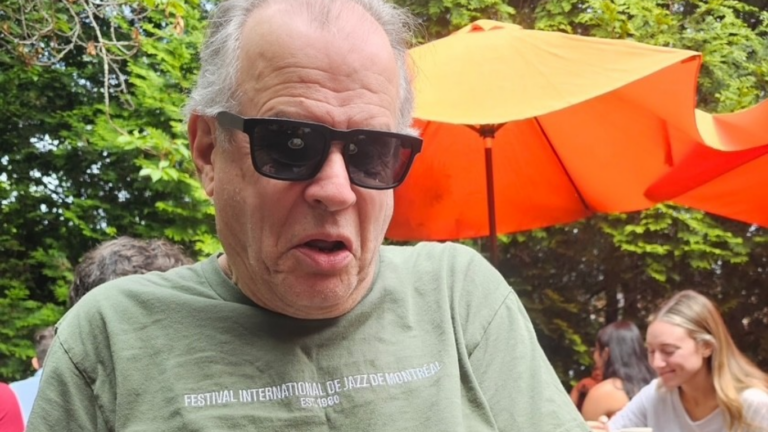 I spent this spring jetting around the country training and consulting – I’m grateful to be back in my mindful living routine. The contrast between these two lifestyles hit me, which is why I want to write about it. Are you living mindfully or moving so fast that you’re hydroplaning through life – just skimming the surface? Let me explain.
I spent this spring jetting around the country training and consulting – I’m grateful to be back in my mindful living routine. The contrast between these two lifestyles hit me, which is why I want to write about it. Are you living mindfully or moving so fast that you’re hydroplaning through life – just skimming the surface? Let me explain.
Mindfulness has become increasingly prevalent in our culture since it was coined in the late 1970’s by Jon Kabot-Zinn. Its encompasses a range of lifestyle choices which help you slow down enough to be focused and aware in the moment, more emotionally centered and connected to the people around you. It encompasses meditation, healthy eating, exercise, awareness of personal choices and our impact on the planet. It creates balance in our life.
Hydroplaning, a term I’m using for the point of discussion here, is what happens when we move too fast. When we’re consumed with details of a fast paced, stressful, high demand, high expectation life style, we can lose touch with our inner self. If we’re zooming through life, It’s hard to be fully present in our body, with others or conscious of the impact we’re having. This can create emotional swings, physical ailments and reactivity to the events around us. It keeps us disconnected from ourselves.
With these basic descriptions, I invite you to take the following QUIZ. There are 6 questions in each category of Mindfulness and Hydroplaning. Which list do you say yes to the most – what is the ratio of one to the other? I invite you to make an honest review.
MINDFULNESS:
- ____ I regularly meditate, journal, or have a consistent method of silent centering reflection
- ____ I exercise regularly 3 or more times a week
- ____ I eat nutritionally healthy food every day
- ____ I connect with friends, colleagues and activities that reflect my values and bring me joy
- ____ I have meaningful work and a sense of purpose in life.
- ____ I often feel satisfied, at peace and connected to everything around me.
____ TOTAL # of YES answers
HYDROPLANING
- ____ I am moving fast and rarely am able to be alone to keep myself centered
- ____ I need to exercise more often
- ____ I know my eating habits need to be more healthy
- ____ I want more friends, colleagues and activities that reflect my values and bring me joy
- ____ I am not sure my work is fulfilling or serving my purpose
- ____ I am juggling too much and often feel frazzled, tired and discontent.
____ TOTAL # of YES answers
HOW DID YOU SCORE?
Based on the number of yes answers in each category, note how you’re doing below:
MINDFULLNESS
6 – Congratulations, you’re a role model – help those around you know the benefits you enjoy
4 -5 – You have a foundation and can make the others happen easily with simple clear intention
3 or less – Keep adding the missing pieces, you’ll get there soon
HYDROPLANING
0- 1 – Congratulations, you are doing great – you got this
2-3 – You’re more than half way there – keep adding the missing pieces, you can do it
4-6 – If you’re ready to make changes, you will – check out the resources on Mindfulness below
UNDERSTANDING YOUR ANSWERS:
Questions 1-3, in each list are the things we do for ourselves that create an internal foundation for a balanced, conscientious, more mindful lifestyle. When we’re able to take the time for deliberate self-care activities like meditation and journaling along with exercises like Yoga, Tai Chi, Qigong, Pilates, meditative walks or other exercise that combine silence and breathing, we connect to our internal self. This enables us to know our wise mind – our truth, and our higher self. It helps quiet the internal chatter to stay more focused, present and calm.
When we add nutritionally healthy food, we’re able to connect to a healthy body which also informs us. Our body gives us internal signals; it has its own intelligence in the form of insight and intuition. Utilizing insight and intuition to inform our choices and responses are increasingly necessary in our complex world.
Combining meditation, exercise and healthy foods are the foundation for a mindful level of consciousness the keeps us internally informed, emotionally stable and at peace.
Questions 4-6, in each list are the things we do for ourselves that are an external reflection of what is going on with us internally. It starts by being clear that we have choices in who and what we surround ourselves with. Our choice of companions, colleagues and activities have a profound influence on us, and us on them. Being conscientious in these choices is essential for life to feel congruent with who we are. When we have a mate, friends and activities that are aligned with our internal sense of self, then our joy in life escalates exponentially.
The work we do is also a clear choice. When it is aligned with our values and utilizes our skills, it often reflects our life’s purpose and provides great meaning to life. Life becomes more satisfying, intentional and conscientious.
With congruent companions, activities and meaningful work added to the internal foundation, we’re are able to live satisfied, conscientious, mindful lives.
What I noticed for myself is that I say yes to all 6 of the mindful questions, except when I am traveling for training and consultation. During those weeks, I often fall off and say yes to the first 3 of the Hydroplaning questions and consequently I end up feeling frazzled, tired and out of sorts. Wow, what a lesson and It happens so quickly. I know what to do to stay more balanced – let’s see if I can do better with my next travels!
When all 6 of these components are aligned, life takes on richer, deeper meaning. It enhances our ability to feel connected to everything around us. Our conscientiousness expands to feeling responsible for making the best possible choices because we understand that they’re far reaching consequences for everything we do.
Mindfulness shapes our lifestyle choices, social interactions, sense of purpose, and how we move in the world. It is creating global consciousness!
Please note, this brief, informal survey and review of the concepts of mindfulness are based on my thoughts, beliefs and practices and are not a reflection of any particular author or study. For more information, please see the excellent mindfulness resources listed below.
If any of this speaks to you and you’d like to explore it for yourself, my Transformational Coaching addresses the heart of these issues. I welcome your inquiry at my website www.spectrumtransformation.com, Please select the Free Consultationbutton for more information on how this may be helpful. I look forward to hearing from you.
Mindfulness Resources:
- Jon Kabat-Zinn, Wherever You Go, There You Are: Mindfulness Meditation in Everyday Life, July 2009, Hachette Books
- Mark Williams, Danny Penman, Mindfulness, An Eight-Week Plan For Finding Peace in a Frantic World, November, 2012, Rodale
- Thich Nhat HanhThe Miracle of Mindfulness: An Introduction to the Practice of Meditation, April 1996, Kindle Edition
- Tara Brach. Radical Acceptance, Embracing Your Life With the Heart of a Buddha, November, 2004, Bantam
- Bob Stahl, Elisha Goldstein , Jon Kabot-Zomm and Saki Santorelli. A Mindfully-Based Stress Reduction Workbook, March 2010, New Harbinger Publications
- Joseph Goldstein, Mindfulness: A Practical Guide to Awakening, November 2013, Sounds True, and Amazon Kindle,








